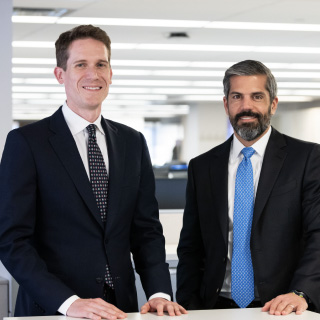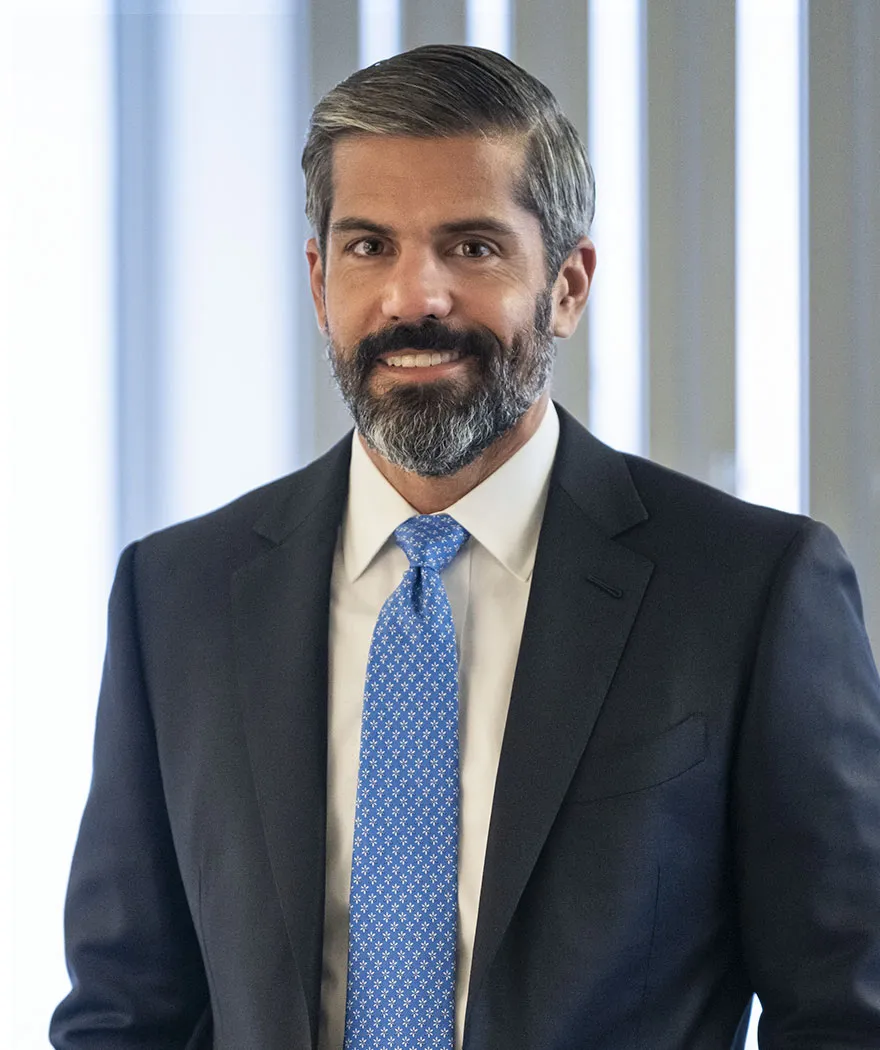How and why did you begin investing in legal assets?
Jack:
Fortress has always been willing to invest in the resources and expertise needed to embrace complexity. We have high conviction in our ability to underwrite and structure the most complex investment opportunities in the market. That’s really become a defining characteristic of our business. And when you unpack complexity, legal risks are often at the core – from the uncertainties in a restructuring or bankruptcy process, to pending litigation that could have a material impact on a company’s financial condition.
Over the years, we have seen many, many situations where an assessment of legal risks and potential litigation outcomes is central to our investment thesis. So, our move into legal assets as a distinct, focused strategy really started organically as we became experts at identifying and underwriting risks embedded in opportunities we saw throughout the Credit business, particularly in the world of distressed debt. We liked the uncorrelated nature of the returns we were able to generate when we underwrote legal risk and so we decided to investigate what the larger opportunity could be in the market for litigation claims, which at the time was in its infancy.
And when did you decide that the expertise you built to address legal risks could be applied as a focused investment strategy?
Jack:
Like all areas where we’ve built specialized teams and strategies, our legal assets capabilities were incubated and refined in our main Credit funds. As we developed our ability to measure legal risks and outcomes, and as we built the resources needed to do that, we began to look at situations where we felt our capital was protected by the underlying business, and litigation claims provided very meaningful potential upside. Eventually, we moved into situations where legal outcomes represented the core of our investment thesis – where understanding and putting a price on legal risks could be the primary driver of potential returns.
Joe:
The Fortress legal assets strategy launched with a series of these deals, including Jack doing some precedent setting law firm financings and litigation-driven securities investments. I joined in 2016. Over time, we expanded our mandate and looked at other ways we could get direct exposure to litigation outcomes. We spent a lot of time developing our sourcing channels, building relationships, and finding ways to deploy capital into structures that created downside protection through exposure to multiple, diverse litigation-related assets. We knew from the outset that, although disciplined investing in single-claim risks could be a piece of the strategy, we’d need to focus on diversified credit-oriented investments to create the right scale and risk-return profile for Fortress’ investors in the long term.
We identified the biggest and most sophisticated platforms in litigation and legal assets, and instead of trying to build a book by funding individual cases, we looked to provide capital to those platforms.
Jack:
And those platforms come in many shapes and sizes. The vast majority of our portfolio is represented by deals with investment grade corporate counterparties that have large dockets of litigation claims, law firms that have books of contingency fees, or litigation funders that originate pools of smaller legal investments. The theme is that by transacting with these platforms, we are cross-collateralizing our investments across a diverse pool of allocations, avoiding the binary risk that is usually associated with litigation finance. We are sometimes giving up extreme upside scenarios to price these deals at levels that the market will bear, but we think that is more than made up for by the downside protection that we create for our investors.
Ola:
To give an example that is similar to some of our group’s largest deals, suppose that a corporate litigant has a book of 30 affirmative legal and regulatory claims, in which the company is looking to manage legal cost and risk. Each of the claims asserts $5-50 million in damages. If we are making a $100 million investment that is crossed over that entire pool of 30 claims, we can feel really confident in underwriting that trade because there are multiple scenarios where a majority of the claims fail and our capital is still protected. That’s, obviously, a compelling dynamic.
Jaime:
And over time, as we've continued to grow our exposure and our portfolio has gotten bigger, our data has improved. That’s provided us with greater confidence and sophistication when we look at financing an individual claim, without the benefit of crossing. So, with the benefit of 12 years of investing in legal assets, we’re able to look at every type of deal that falls within litigation finance or trading in legal risk. We'll do it on a direct basis or indirect basis. And we think our team gives us the ability to do that globally in a very competitive way.
What does the Fortress Legal Assets team look like today? What differentiates Fortress in the space?
Jack:
We have more than 20 people in our Legal Assets Group, primarily based in our New York and London offices. We have offices in other jurisdictions as well – but generally, New York and London have become the gateways to the U.S. and European litigation finance markets. The competitive landscape has changed as other market participants have entered, looking for creative ways to generate non-correlated returns for investors. The barrier to entry is still high, though. Few firms have the wherewithal to build the resources and hire the talent needed to really address the opportunity set in a sophisticated and comprehensive way. In my view, that’s what has really differentiated Fortress even as other investors have begun to focus on this asset class.
Joe:
The Fortress Legal Assets team includes former lawyers, active litigation analysts, and dedicated finance and asset management professionals who help us analyze risk, develop deal structures, and execute on transactions. We’ve put a big priority on recruiting credit investment professionals who have a strong specialty finance background, and commercial-minded attorneys who understand risk. But everyone on the team is taking the same underwriting approach to legal risks as the broader Fortress Credit business, with a focus on diversification and downside protection.
Jaime:
In our litigation analysis and underwriting, which is part of the business that I oversee globally, it’s important that we have subject matter experts on the ground in the U.S., Europe, and Australia. There’s no substitute for that type of jurisdiction-specific understanding of litigation risk. We can pull together exactly the team we need for each deal depending on the structure, levels of complexity, and on whether it’s a single case exposure or a portfolio.
Ola:
To cover Europe and Australia, the other two key markets besides the U.S., and be a truly global player in litigation finance, a local presence is a virtual necessity. The dynamics of these markets, and the specific characteristics across different jurisdictions, require feet on the ground. We’ve built out our teams in London and Sydney substantially over the past several years with research, sourcing and credit structuring expertise and capabilities. That’s become a key differentiator for us in those markets. We have the ability to leverage our global reach and relationships alongside a real depth of experience and knowledge at the local level.
What are some of the most meaningful trends you are seeing in the Legal Assets space today?
Jack:
Maybe the most important trend is a continuation of law firms looking to change how they capitalize themselves – moving away from a 100% dependence on law partners’ personal equity capital. This shift is really driving deal flow today.
As an example of that trend, a select few U.S. jurisdictions are now permitting ownership interests in law firms from non-lawyers. That’s opened the door to preferred and structured equity investments directly into law firms in the U.S. In other jurisdictions, like the UK, regulatory structures that permit non-lawyer equity investments in law firms have been around for years, but we think these structures are under-utilized. Overall, because of the unique services that lawyers provide and how they’re regulated, law firms are probably still 20 to 30 years behind other sectors in terms of how they raise debt and equity capital. That’s starting to change, leading to more deal flow for our group.
Jaime:
One negative trend we are keeping a close eye on concerns the availability of capital for legal assets investments. As more competitors have entered the market looking to capture attractive non-correlated returns, as law firms have benefited from more options for funding, we’re seeing case budgets increase. We call it ‘budget creep.’ With funding more readily available, and heightened competition between potential funders, law firms can become less vigilant about managing their costs.
We’re very strict about monitoring budgets and putting limits and protections in place. Because budget creep is bad for everybody. It’s bad for the claimants, it’s bad for defendants. The case is less efficient, less profitable. So, it’s something we’ll continue to monitor closely, and that we’ll maintain our discipline in avoiding.
Ola:
Along the lines of the trend that Jack mentioned, in Europe and Australia we are seeing law firms becoming more educated consumers of litigation finance. Traditionally, law firms have predominantly raised litigation funding on a case-by-case basis in these markets. With the introduction of contingency fees in the UK and Australia (which is much more recent than in the U.S.), law firms have begun pooling cases together and raising cross-collateralized funding facilities on more attractive terms compared to the funding terms they can obtain on individual cases. That’s a development that plays to our strengths, where we can use our credit structuring experience to get exposure to diversified investments of size and with attractive risk-return profiles.
Joe:
Another thing we’re watching is the growing complexity in how companies settle big litigations. Whether it’s a 100% corporate dispute, between two businesses, or it’s a group litigation brought by consumers, plaintiffs and defendants are becoming more creative in how they structure the resolution. Settling a big case with one lump-sum cash payment and signing releases is beginning to seem like the outlier rather than the norm. That’s not a bad thing for litigation. It just reflects that parties are getting more sophisticated and better at maximizing value for both sides of the dispute. But I think it’s a good thing for the legal assets business at Fortress, since we see the complexity as an opportunity to find good deals.
Are there opportunities to build on the position you’ve established in the market?
Jack:
Absolutely. We’re still in the early days of legal assets as a distinct asset class. The business at Fortress has grown to a place where we are consistently originating over $600 million in new transactions each year, across all jurisdictions and structures. And the pace is not abating—we have more than $2 billion in new opportunities in our pipeline today.
All in, we’ve deployed more than $5 billion in the Legal Assets strategy since 2012. Given the backdrop of opportunities, the fact that more litigants and law firms are exploring the benefits of external capital solutions, and the truly differentiated platform and team that we’ve built, we expect that we can continue to grow while maintaining the same underwriting standards.
We are excited about what the future holds for Legal Assets investing at Fortress.

